Select the Right Elevator for your Next Hotel!
Passenger elevators play a vital role in hotel guest circulation. In this article, I discuss some basics of elevator design and selection to ensure you make the right decision for your next hotel.
We often receive questions from hotel developers about proper elevator selection. Here I address some of the most common questions we receive. For now, I focus this discussion on low-rise hotels (three to seven stories).
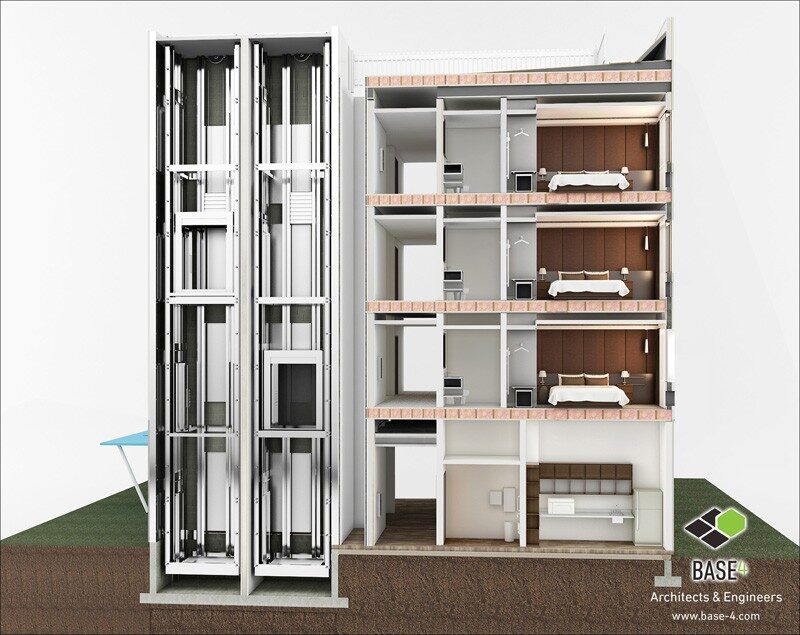
When are elevators required? According to IBC (International Building Code) guidelines, at least one elevator is required for all buildings with four or more floors. Beyond code requirements, hotel franchises also have minimum requirements for elevators as part of their brand standards.
How many elevators do I need? At a minimum, a good rule of thumb is one elevator bank per 75 keys for low-rise hotels plus one service elevator for up to 100 keys. For most hotels between 100-150 keys, two elevator cabs are sufficient. However, many times hotel owners elect to include more than one to limit wait times or meet franchise brand standards. When the key count goes above 200 keys, we typically recommend a third elevator be added.
What is the right size cab (Inner Cab Dimensions)? Typical elevator cab sizing for a standard guest elevator is 6’-8” x 5’-5”. However, minimum sizes will vary by the franchise as part of their brand standard requirements. Some projects will also require a stretcher elevator.
What is the right capacity? Typical hotel elevators have a capacity of 3,000 – 4,000 lbs. Many of the major hotel brands have minimum capacity requirements as part of their brand standards.
What is the ideal location: Walking distances from the elevator lobby to any room should not exceed 150’. The higher the brand classification, the lower this number should be in order to maintain guest expectations.
When do I need a service elevator? Hoteliers should typically provide a minimum of one service elevator. For smaller projects, it is often permitted to share a guest elevator with a service elevator by utilizing dual front and rear opening doors. Service elevators should open directly to back-of-house areas with keyed access to service housekeeping and laundry services. Please note that these cab types necessitate a slightly wider than normal elevator shaft.
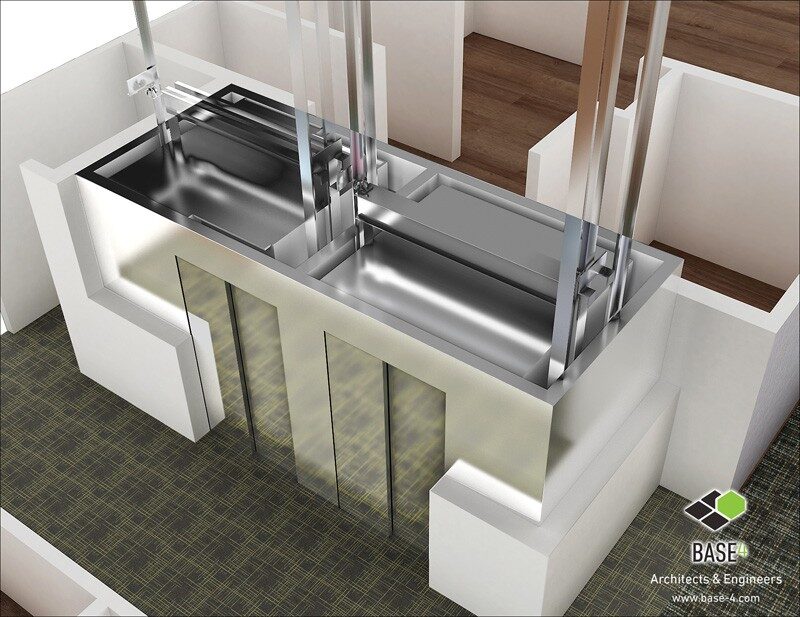
When is a stretcher elevator required? A stretcher elevator is required in all buildings with four or more stories above or below grade plane per the IBC. This elevator must accommodate a 24” by 84” ambulance stretcher in the horizontal open position and have an off-centered door with a minimum capacity of 3,500 lbs.
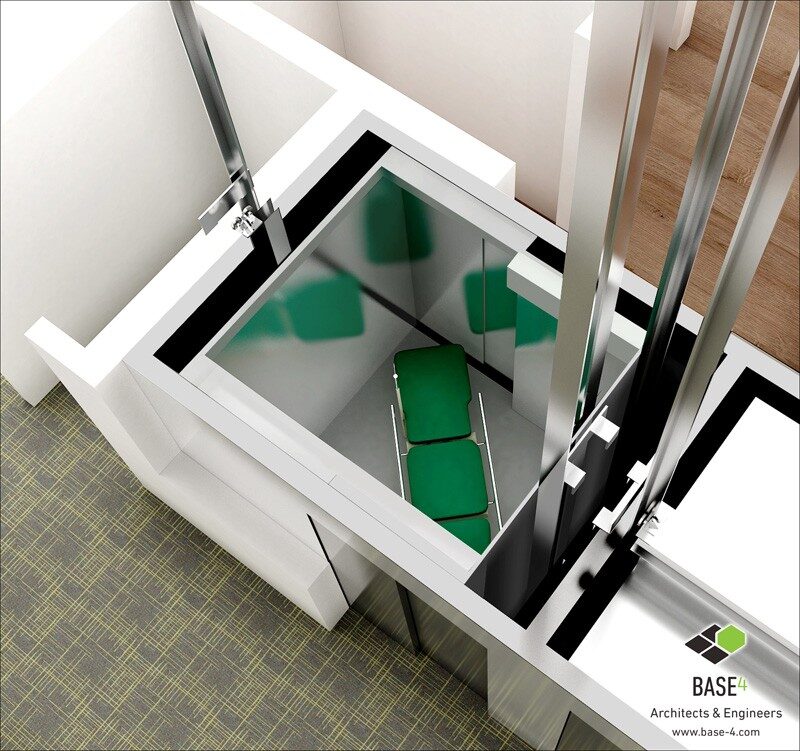
What speed of elevator is required? Elevator speed requirements vary based on elevator type and number of stories. For most three- to five-story hotels, the speed is approximately 100-200 fpm (feet per minute). Most major franchises also have minimum requirements for elevator speed which must be met.
What are the most common brands? Typically, hoteliers select their elevator brand based on price, reputation, and service/maintenance availability. Most major elevator brands have service support available in all major cities, but for more rural locations, service availability should be a consideration. Below are the four most common brands we typically see in our designs.

Do I need backup power for my elevator? Yes. There are two different options to consider.
- Buildings with fewer than 4 floors above egress – Elevators must be connected to the MSB (Main Switch Board) with a battery lowering system. This system will bring the elevator cab to the landing level in the event of an emergency or loss of power.
- Buildings with 4 or more floors above egress – Elevators must be equipped with emergency generators to keep the elevator in operation in the event of a power loss. A general requirement is to provide a generator capable of two hours of operation.
Hotel buildings are typically designed with one of the following two types of elevators; Hydraulic Elevators or Electric MRL (Machine-roomless) Elevators. In my next newsletter, I discuss both of these in more detail and explain the benefits and drawbacks of each.

Blair Hildahl
Base4 Principal
608.304.5228
Sources: https://codes.iccsafe.org/

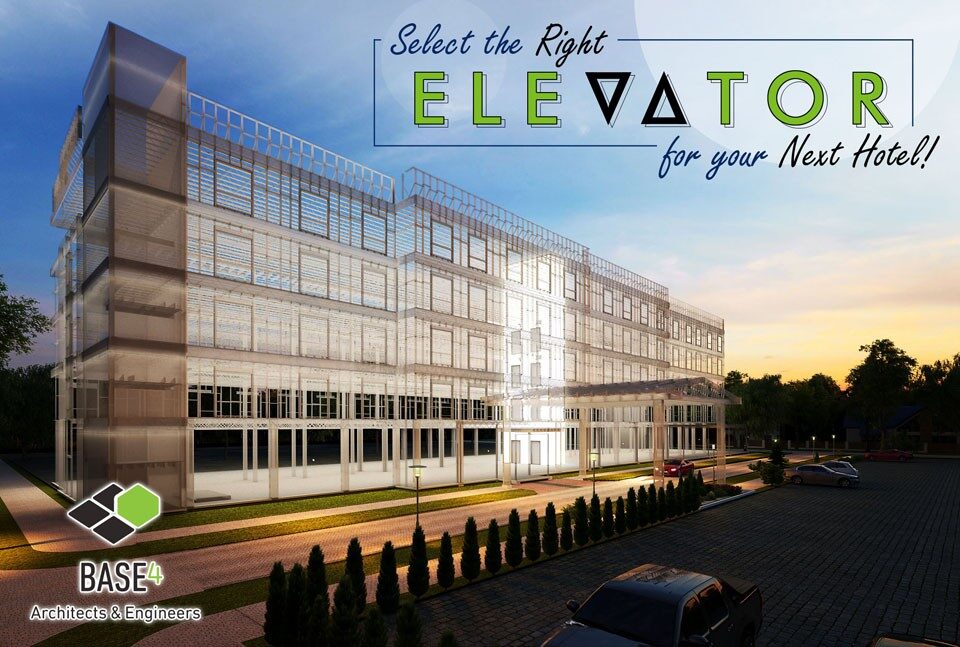
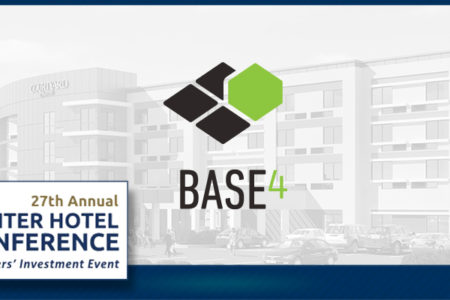


My brother has always had a dream to build and run his own apartment building, and he wants to start constructing it soon. I suggested he take consideration in adding an elevator to his future building, and your article had some great information regarding this that he could use. You mention that if the building is four or more stories, the elevator must be large enough to accommodate a 24” by 84” ambulance stretcher in the horizontal open position, and I’ll share this with him so the elevator in his future apartment building follows all codes and restrictions.
My brother has always dreamed of owning his own hotel, and he even wants to build it from the ground up. Your article had some great tips for choosing an elevator that my brother could consider for his future hotel, and I liked how you said that if the building has fewer than four floors, an elevator must be connected to the MSB with a battery lowering system. Thanks; I’ll share this with my brother so he can choose a good elevator for his future hotel.
Nice Blog!! The content you have shared is very elaborative and informative. Thanks a lot for sharing such a great piece of knowledge with us.
Hey. Thank you so much for sharing such a detailed and helpful article. Choosing the elevator for commercial as well as residential use is very difficult. One has to analyze all the advantages and disadvantages very critically before making a final choice.
Choosing the right kind of elevator for your building or hotel is very necessary. When possible, it is ideal to build a place to accommodate an elevator. Navigating the stairs might be difficult for those who have faced injuries are aged etc. and when there are so many floors, it is impossible. Thanks.